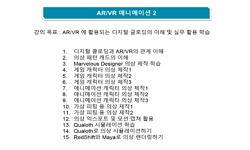이 글은 대행선의 수행관修行觀을 화엄교학과 관련 깊은 여래장如來藏과 여래출현如來出現 사상을 방법론 또는 틀로서 이용하여 고찰한다. 이 두 입장은 ‘나’의 참된 모습, ‘나’의 마...
http://chineseinput.net/에서 pinyin(병음)방식으로 중국어를 변환할 수 있습니다.
변환된 중국어를 복사하여 사용하시면 됩니다.
- 中文 을 입력하시려면 zhongwen을 입력하시고 space를누르시면됩니다.
- 北京 을 입력하시려면 beijing을 입력하시고 space를 누르시면 됩니다.

여래장과 여래출현을 통해 본 대행선의 수행관 = Practice Philosophy of Daehaeng Seon Seen from the Concepts of Tathāgata-Garbha and the Appearance of the Tathāgata
한글로보기https://www.riss.kr/link?id=A107833379
- 저자
- 발행기관
- 학술지명
- 권호사항
-
발행연도
2021
-
작성언어
Korean
- 주제어
-
KDC
220
-
등재정보
KCI등재후보
-
자료형태
학술저널
-
수록면
13-51(39쪽)
- 제공처
- 소장기관
-
0
상세조회 -
0
다운로드
부가정보
국문 초록 (Abstract)
이 글은 대행선의 수행관修行觀을 화엄교학과 관련 깊은 여래장如來藏과 여래출현如來出現 사상을 방법론 또는 틀로서 이용하여 고찰한다. 이 두 입장은 ‘나’의 참된 모습, ‘나’의 마음을 청정한 여래의 마음으로 본다는 점에서 비슷하지만 지금, 여기의 ‘나’를 번뇌에 속박되어있는 존재로 볼 것인지, 아니면 한 치의 모자람도 없는 여래의 출현으로 볼 것인지에 따라서 차이가 있다. 지금, 여기의 ‘나’가 여래장인가, 아니면 여래출현인가에 따라서 ‘나’가 닦아야 할 수행도 달라질 수밖에 없다. 여래장이라면 수행은 번뇌를 걷어내고 본래의 불성을 드러내어 부처를 이루기 위한 것이지만 여래출현의 경우에 수행은 단지 지금, 여기에서 부처로서 살아가는 행위일 뿐이다.
대행선 수행에 관한 기존 연구와 대행의 수행 관련 설법을 살펴보면 화엄교학의 이러한 두 가지 관점과 유사한 두 종류의 흐름이 대행선 수행에도 내재하는 것을 확인할 수 있다. 그렇다면 대행선 수행의 두 흐름은 어떤 관계를 맺고 어떤 구조로 되어 있는 것일까? 이에 대해서 논자는 아직 문헌적 증거를 확보하지는 못했지만 이에 대한 하나의 가설로서 의상의 화엄교학에 보이는 이중 구조를 제안하였다. 의상은 일승법계도의 반시槃詩 중 굴곡을 삼승에, 원만한 도인을 일승에 비유하여 삼승이 곧 일승인 삼승과 일승의 주반상성主伴相成 구조를 주장한다. 이처럼 대행선 수행의 두 흐름도 여래장의 수행이 곧 여래출현의 수행인 이중 구조로 파악할 수 있지 않을까 하는 것이 논자의 제안이지만 이에 대해서는 더욱 면밀한 후속 연구가 필요하다.
다국어 초록 (Multilingual Abstract)
This paper looks into the practice philosophy of Daehaeng Seon by using as research methodology the concepts of tathāgata-garbha and the manifestation of the Tathāgata, which are closely related to Hwaeom (Chi. Huayan) studies. These two concepts ar...
This paper looks into the practice philosophy of Daehaeng Seon by using as research methodology the concepts of tathāgata-garbha and the manifestation of the Tathāgata, which are closely related to Hwaeom (Chi. Huayan) studies. These two concepts are similar in that they regard one’s true nature or one’s mind as the pure mind of the Tathāgata, but they diverge in seeing the “here and now self” as a being bound by afflictions or seeing the self as a manifestation of the perfect Tathāgata devoid of any deficiency respectively. In other words, whether the “here and now self” is tathāgata-garbha or a manifestation of the Tathāgata requires different courses of practice. If the “here and now self” is tathāgata-garbha, one’s practice is oriented toward removing afflictions to reveal one’s inherent Buddha nature to attain Buddhahood; if it is a manifestation of the Tathāgata, one’s practice is simply the act of living here and now as a Buddha.
When we examine existing research on Daehaeng Seon practice and her own practice-related Dharma talks, we see that two currents similar to these two concepts also exist in the practice of Daehaeng Seon. If so, how are these two currents related and what structure do they have? I have not found any literary evidence on those yet, but I propose a theory of the dual structure found in Uisang’s Hwaeom studies. In his Ilseung beopgyedo [Diagram of the Dharma-Realm of the One Vehicle], Uisang likens the right-angle bends seen in the helical poem to the three vehicles, and likens a perfect sage to the one vehicle. In this way he contends that the “one vehicle” is no different from the “three vehicles,” a dual structure in which two aspects complete each other. In the same way I propose that the two currents of Daehaeng Seon practice may be understood as a dual structure in which the practice of tathāgata-garbha is equal to the practice of the manifestation of the Tathāgata. However, further careful studies are required on this proposition.
KEYWORDS
Daehaeng Seon, practice philosophy, tathāgata-garbha, manifestation of the Tathāgata, One Mind [Hanmaum], Baoxing lun, Uisang, Ilseung beopgyedo
목차 (Table of Contents)
- Ⅰ. 수행이란?
- Ⅱ. 여래장의 수행
- 1. ‘나’: 중생과 부처의 본래적 동일성과 현상적 차별성의 공존
- 2. 수행: 믿음을 통한 중생과 부처의 본래적 동일성의 현현
- 3. 화엄교학의 여래장 수행
- Ⅰ. 수행이란?
- Ⅱ. 여래장의 수행
- 1. ‘나’: 중생과 부처의 본래적 동일성과 현상적 차별성의 공존
- 2. 수행: 믿음을 통한 중생과 부처의 본래적 동일성의 현현
- 3. 화엄교학의 여래장 수행
- Ⅲ. 여래출현의 수행
- 1. ‘나’: 여래의 출현이 아니라 출현이 곧 여래
- 2. 수행: 부처를 이룸(成佛)이 아니라 부처행을 함(行佛)
- Ⅳ. 대행大行의 수행
- 1. 대행선 수행에 대한 기존 이해의 두 흐름
- 2. 대행선 수행의 이중 구조: 여래장이 곧 여래출현
- Ⅴ. 대행이란?
동일학술지(권/호) 다른 논문
-
천태학에서 바라본 대행(大行)의 불교학 -천태 오시교상과 대행설법을 중심으로
- 대행선연구원
- 이기운(동국대 불교학술원 조교수)
- 2021
- KCI등재후보
-
- 대행선연구원
- 김호귀(동국대 불교학술원 HK교수)
- 2021
- KCI등재후보
-
밀교적 시각에서 바라본 대행선사의 법어 – 『한마음요전』을 중심으로 –
- 대행선연구원
- 강대현(위덕대학교 초빙교수)
- 2021
- KCI등재후보
-
- 대행선연구원
- 이현중(충남대학교 교수)
- 2021
- KCI등재후보




 RISS
RISS







